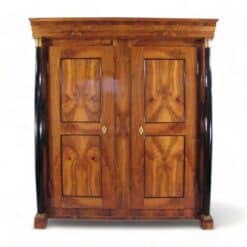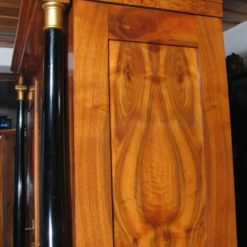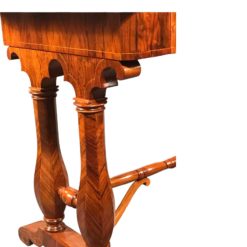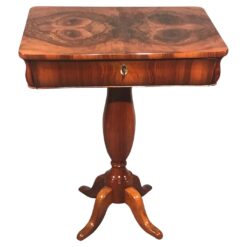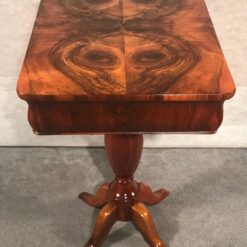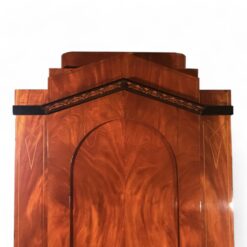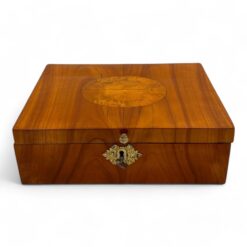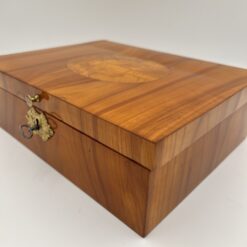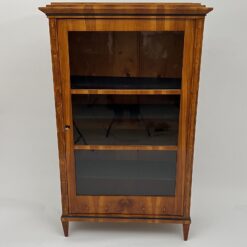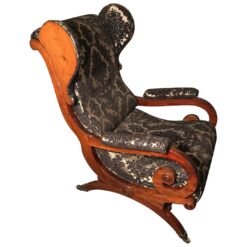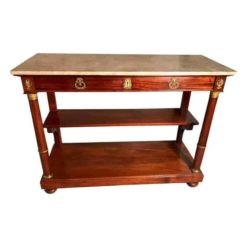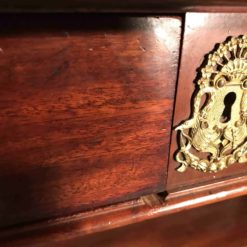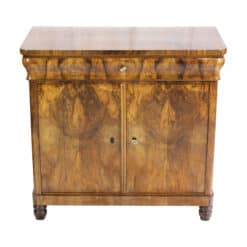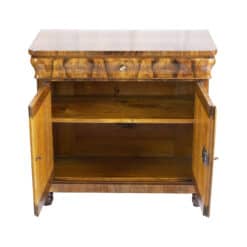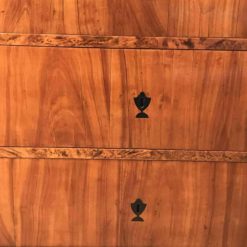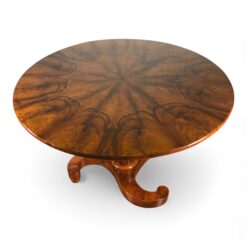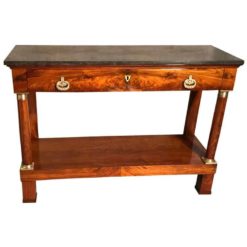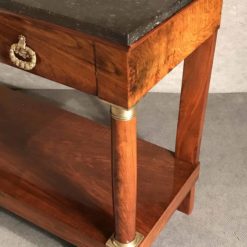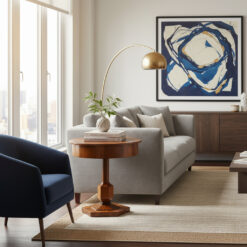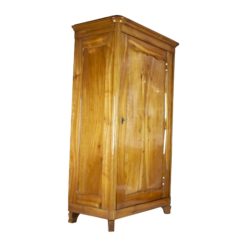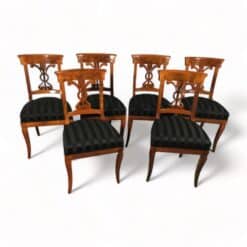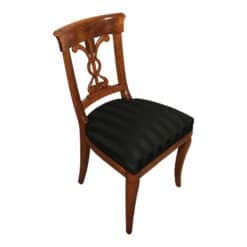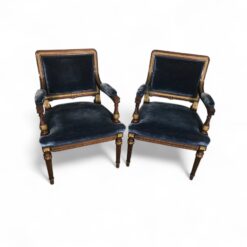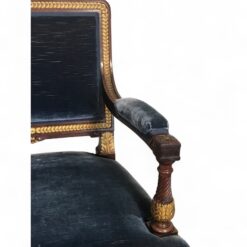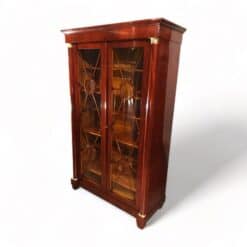Best Sellers
Antique Furniture and Decor
Antique Furniture and Decor
Antique Furniture and Decor
Antique Furniture and Decor
Antique Furniture and Decor
Antique Furniture and Decor
Antique Furniture and Decor
Antique Furniture and Decor
Antique Furniture and Decor
Cherry Biedermeier Display Cabinet, Ash Burl, Austria circa 1820
Antique Furniture and Decor
Furniture, Styylish History
The Swan Motif in Empire and Biedermeier Furniture
Grace in Carved Form: The Swan Motif in Empire and Biedermeier Furniture.
Among the many ornamental flourishes that characterize 19th-century European furniture, few are as elegant or symbolically rich as the swan motif in Empire and Biedermeier furniture. Found in carved armrests, gilded details, and painted panels, the swan carried powerful meaning during the Empire and Biedermeier periods. Far from being a purely decorative flourish, the swan reflected both classical heritage and evolving cultural values—from imperial grandeur to domestic refinement.
In this blog post, we explore the fascinating history of the swan motif in antique furniture, its role in Empire and Biedermeier design, and why these graceful details continue to captivate collectors and interior designers today.
The Empire Style: Power, Myth, and the Rise of the Swan
The Empire style emerged during the reign of Napoleon Bonaparte, dominating French design from roughly 1800 to 1815. Inspired by ancient Rome and Greece, it was characterized by strong lines, monumental forms, and richly symbolic decoration. Furniture from this period often featured motifs that emphasized authority, order, and divine lineage—including eagles, laurel wreaths, sphinxes, and, notably, swans.
Swan Symbolism in Empire Design
In classical mythology, the swan is closely linked to Apollo, god of the arts, prophecy, and light. The bird was believed to sing beautifully before its death—a metaphor for creative brilliance and fleeting beauty. The swan also appears in the famous myth of Leda and the Swan, a frequent subject in neoclassical art.
However, it was Empress Joséphine, Napoleon’s first wife, who played a central role in popularizing the motif in Empire interiors. Her personal residence, Château de Malmaison, was lavishly decorated with swan imagery. The empress favored delicate, romantic details that softened the otherwise austere style of the Napoleonic regime. Swans became a recurring decorative theme in her boudoirs, chairs, and even bathtub fixtures.
Furniture Design: Where Swans Appear
Empire furniture often features swan-shaped arms on chairs, scrolled swan legs on tables and benches, and gilded bronze appliqués in the form of swans on case pieces. These were not merely aesthetic choices—they signaled cultural sophistication and political alignment with the values of the First French Empire.
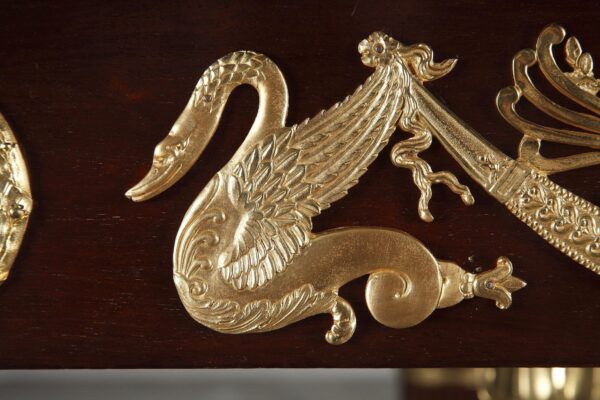
Designers such as Jacob-Desmalter, a prominent ébéniste in Napoleon’s court, used swans in their most luxurious commissions. Today, authentic Empire pieces with well-executed swan details are highly sought after by collectors of antique French furniture.
The Biedermeier Era: A Softer, Sentimental Swan
After Napoleon’s fall, the Empire style gave way to something more intimate. The Biedermeier period (c. 1815–1848) flourished primarily in Austria and German-speaking regions, ushering in a new focus on bourgeois comfort, domestic life, and simplicity.
Though still informed by classical ideals, Biedermeier furniture softened the dramatic lines and symbols of its predecessor. In this context, the swan motif took on new meaning, moving away from imperial symbolism toward a more romantic and sentimental interpretation.
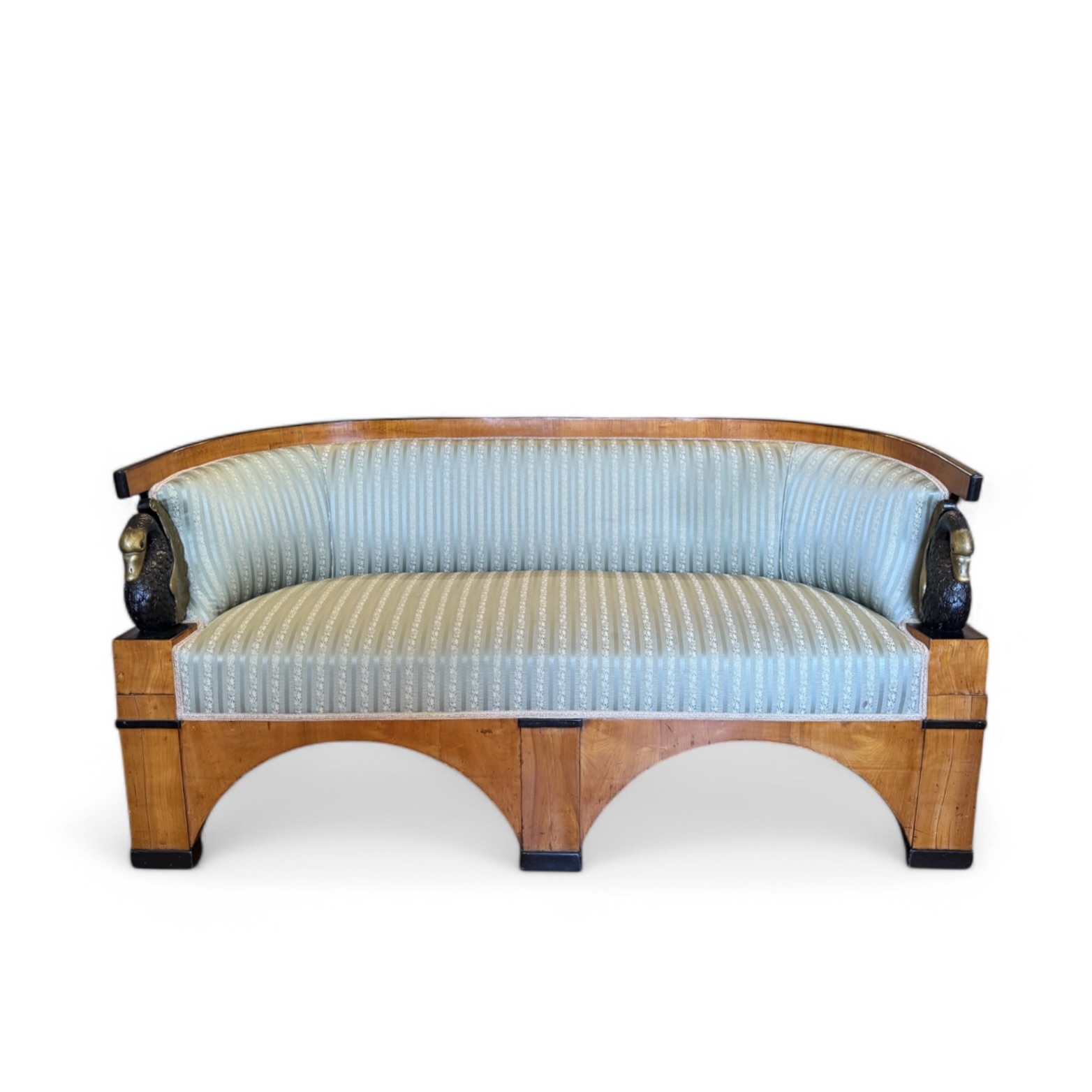
The Swan in Biedermeier Interiors
Biedermeier design emphasized functionality, fine craftsmanship, and elegant restraint. Swans, when they appeared, were typically carved from warm-toned woods like walnut or cherry, rather than cast in ormolu or embellished with heavy gilding. The forms were more naturalistic, fluid, and gentle.
Whereas Empire swans projected grandeur and classical authority, Biedermeier swans conveyed grace, loyalty, and serenity—qualities valued in the increasingly private, inward-looking world of the 19th-century middle class.
You might find swan motifs on:
-
Gondola chairs, where the armrests curve into stylized swan heads
-
Daybeds or recamiers, with gently curving backs ending in swan-like forms
-
Decorative marquetry and inlays on cabinets and writing desks
-
Textile patterns used for upholstery and drapery
-

Biedermeier Chairs with Swan Motif in the Backrest
Swans were no longer overt symbols of political power but reminders of beauty in daily life—a harmony between nature, craftsmanship, and home.
Why the Swan Motif Still Matters
Today, swan motifs in antique furniture offer both aesthetic beauty and historical depth. For collectors and designers alike, they represent a unique opportunity to connect with two significant periods of European design:
-
Empire swans convey drama and mythology, often ideal for bold interiors that draw on historical grandeur.
-
Biedermeier swans speak to quiet elegance, ideal in transitional or minimalist spaces that celebrate craftsmanship and subtle detail.
Swan-accented pieces are also conversation starters—they link classical symbolism with personal storytelling and visual poetry.
How to Incorporate Swan Motifs Today
If you’re thinking of adding an antique with swan detailing to your interior, consider the following:
-
Accent Chairs: A gondola or tub chair with swan arms makes a striking focal point in an entryway, bedroom, or reading nook.
-
Console Tables: Tables with swan-leg supports blend beautifully into hallways or under mirrors.
-
Daybeds and Benches: These add both sculpture and softness to a room, especially when upholstered in modern fabrics for contrast.
-
Statement Cabinets: Look for sideboards or commodes with subtle marquetry or carved swan motifs to bring understated drama into a space.
Final Thoughts: The Swan as a Timeless Design Element
From Napoleonic power to Biedermeier romance, the swan motif has long held a special place in European decorative arts. It represents a rare convergence of myth, style, and emotional resonance—a motif that’s as at home in a royal palace as it is in a modern apartment.
Whether you are a seasoned collector or simply looking to add a touch of symbolic grace to your home, furniture adorned with swan motifs offers enduring appeal. These pieces remind us that design can be both functional and poetic, rooted in history yet timeless in beauty.
Looking for antique furniture with swan details? Browse our curated collection of Empire and Biedermeier pieces to find that perfect accent—steeped in history, crafted with care, and always full of character.
Silke Berlinghof
People also buy
Console Tables
Antique Furniture and Decor
Antique Furniture and Decor
Antique Furniture and Decor
Chests of Drawers, Dressers, Commodes
Antique Furniture and Decor
Console Tables
Antique Furniture and Decor
Antique Furniture and Decor
Single Door Viennese Biedermeier Wardrobe, Cherrywood, 1850, Antique
Antique and Vintage Seating
Antique Furniture and Decor
Antique Furniture and Decor

